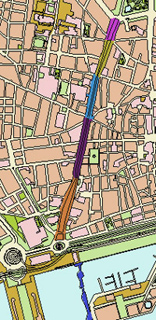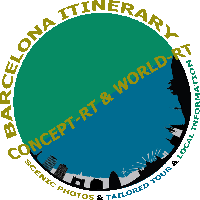La rambla
In the past, Barcelona was only the hexagon of the enclosure of the 15th century and it consisted only of the actual Casc Antic area which was surrounded by convents and walls and limited by those following streets:
|
|
The rambla was the only wide street and the old stream which crossed the city and its name comes from an arabic word “ramla” which means “sandy ground”.
In 1704, walls were destroyed, around “La Boqueria”, and they started to build houses and to plant trees. In 1775, it was the turn of the walls around “Drassanes” and at the end of the 18th century, streets were developed and the rambla converted in avenue from the top at plaza catalunya until the end at Columbus statue (near the sea).
It is divided in 6 parts with 6 different names, following the order:

- rambla de canaletes (purple line). The name was given because of the fountain of Canaletes, it was said that who will drink from this fountain will always come back to Barcelona.
- rambla dels estudis (green line). The name was given because of the building built in the middle of the 15th century named “Estudi General“ or “Universidad“ and it was destroyed in 1843.
- rambla de les flors (also known as rambla de Sant Josep - blue line). The name was given because of the old convent of Sant Josep located here and also because it is the only place in the 19th century where people can buy flowers.
- rambla dels caputxins (also known as rambla del centre - dark purple line). The name was given because of the old convent of capuchin monks.
- rambla de Santa Mònica (light brown line). The name was given because of the name of the parish church (Santa Monica church) which was in the past the old convent of the “Agustins Descalços”.
- rambla de mar (dark blue line). This part is the newer one and it is the bridge avenue (near the Columbus statue) which crosses the sea to bring us to the mall Maremagnum.
So if you want to know everything, just stay in front of your screen and click on next to start first with "rambla de canaletes" (rambla of channels) and ending my section about "la rambla" by the last one "rambla de mar" (rambla of the sea).


